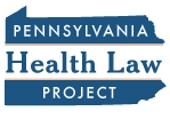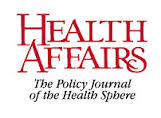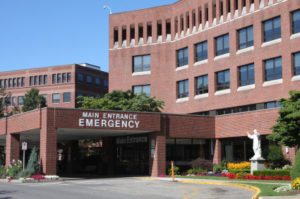PA Health Law Project Newsletter
The Pennsylvania Health Law Project has published its October 2019 newsletter.
 Included in this month’s edition are articles about:
Included in this month’s edition are articles about:
- the state’s release of a request for applications for insurers to serve participants in Pennsylvania’s HealthChoices physical health care program
- Pennsylvania’s new Medicaid preferred drug list
- legislation to expand the state’s Medical Assistance for Workers Program
- the expansion of the state’s Living Independence for the Elderly (LIFE) program to 14 new counties over the next 18 months.
Read about these subjects and more in the Pennsylvania Health Law Project’s October newsletter.
 The report presents information on hospital volume and outcomes for 17 different medical conditions and surgical procedures from October 2017 through September 2018. It also compares hospital performance over the five-year period from 2013 through 2018 on an aggregate state-wide basis and for individual hospitals.
The report presents information on hospital volume and outcomes for 17 different medical conditions and surgical procedures from October 2017 through September 2018. It also compares hospital performance over the five-year period from 2013 through 2018 on an aggregate state-wide basis and for individual hospitals. The report includes:
The report includes: Specifically, they experienced:
Specifically, they experienced: The Medicaid DSH cut was included in the 2010 health care reform law in anticipation of a great reduction in the number of uninsured people leaving hospitals providing much less uncompensated care and therefore not in need of as much DSH money. The law’s reach has not proven to be as great as anticipated, however, and two developments since the law’s passage have put a damper on the expected rise in the number of insured Americans: a court decision that made it optional for states to expand their Medicaid program and the repeal of the requirement that everyone purchase health insurance.
The Medicaid DSH cut was included in the 2010 health care reform law in anticipation of a great reduction in the number of uninsured people leaving hospitals providing much less uncompensated care and therefore not in need of as much DSH money. The law’s reach has not proven to be as great as anticipated, however, and two developments since the law’s passage have put a damper on the expected rise in the number of insured Americans: a court decision that made it optional for states to expand their Medicaid program and the repeal of the requirement that everyone purchase health insurance. As reported by Kaiser Health News,
As reported by Kaiser Health News, The Philadelphia Business Journal reports that since Hahnemann’s closing was announced during the summer, ER volume has risen 15 percent, admissions have risen 12 percent, and births have risen more than 50 percent at Thomas Jefferson University Hospital, a SNAP member. Meanwhile, SNAP member Pennsylvania Hospital has seen its ER visits rise nine percent, SNAP member Penn Presbyterian Medical Center has seen its ER volume increase five percent, and SNAP member the Hospital of the University of Pennsylvania has seen its ER volume rise five percent.
The Philadelphia Business Journal reports that since Hahnemann’s closing was announced during the summer, ER volume has risen 15 percent, admissions have risen 12 percent, and births have risen more than 50 percent at Thomas Jefferson University Hospital, a SNAP member. Meanwhile, SNAP member Pennsylvania Hospital has seen its ER visits rise nine percent, SNAP member Penn Presbyterian Medical Center has seen its ER volume increase five percent, and SNAP member the Hospital of the University of Pennsylvania has seen its ER volume rise five percent. This area is served almost exclusively by Pennsylvania safety-net hospitals and recently suffered a major loss when one of those providers, Hahnemann University Hospital, closed its doors.
This area is served almost exclusively by Pennsylvania safety-net hospitals and recently suffered a major loss when one of those providers, Hahnemann University Hospital, closed its doors.  Pennsylvania rates will rise an average of four percent for individual plans and 9.7 percent for small groups, the state Insurance Department has announced. All insurers that offered plans in 2019 will do so again in 2020 and the exchange will include a new insurer and increased choice in some of the state’s 67 counties. Beginning in 2020, residents of only six counties will have only a single insurer offering individual plans.
Pennsylvania rates will rise an average of four percent for individual plans and 9.7 percent for small groups, the state Insurance Department has announced. All insurers that offered plans in 2019 will do so again in 2020 and the exchange will include a new insurer and increased choice in some of the state’s 67 counties. Beginning in 2020, residents of only six counties will have only a single insurer offering individual plans.